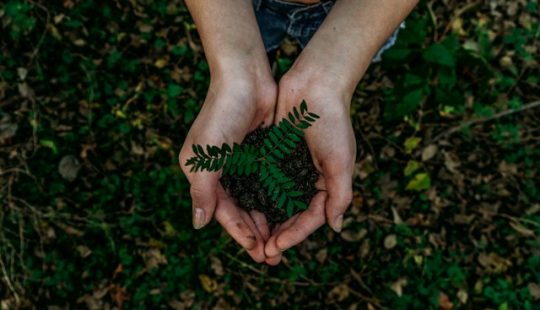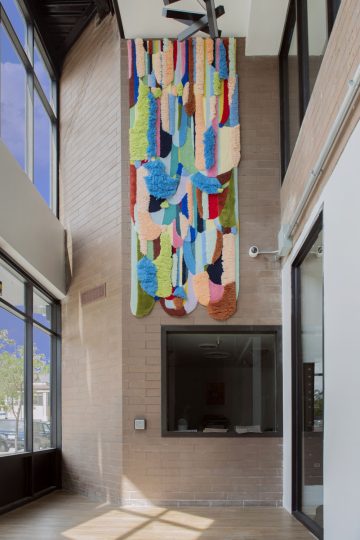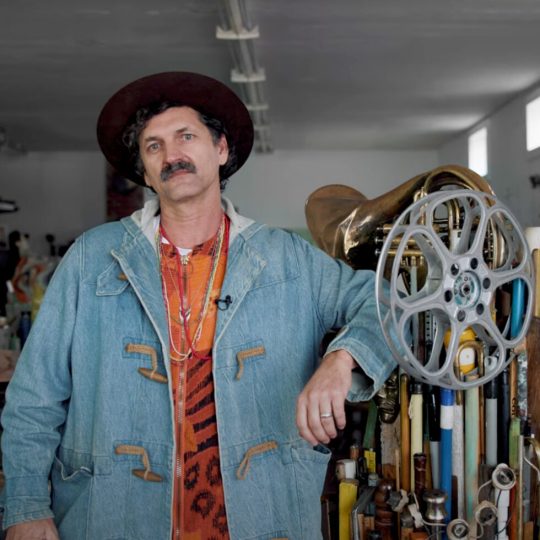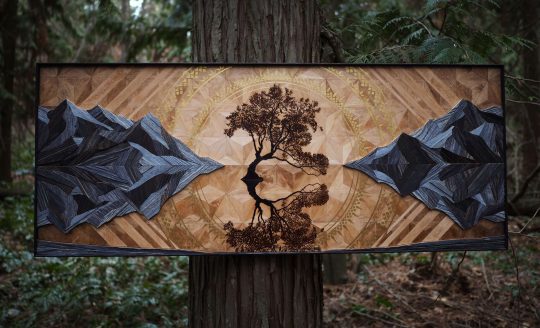Can environmental art be more than just a buzzy trend? With so many businesses vying for our attention, owners are constantly on the lookout for innovative ways to stand out and connect more deeply with their customers. And smart owners understand that, regardless of whether you’re a retail destination or a place to rest your head, their branding is crucial when it comes to creating an identity that will set them apart and turn some heads.
But with so many trends and aesthetics to choose from, where do we turn? We’ve discussed popular art trends in the corporate world before, but as more and more people begin to think about sustainability, environmental art becomes an increasingly—ahem—attractive choice.
The history of environmental art
Despite being such a contemporary talking point, environmental art is not a recent phenomenon. In fact, eco-artists have worked with environmental themes and infused them into their work for millennia. Consider the ancient cave paintings created during the ice age and their depictions of animals and natural scenes: not only were our ancestors cataloging their impressions of the natural world, but science has indicated that they may have also been engaged in the earliest forms of communication. Is there any clearer indication of our early understanding of the importance and impact of the natural world?
Other movements, such as the Barbizon School, romanticized and encapsulated the natural world in their mesmerizing works while also representing the relationship—and dependence of humans upon—nature. Initially rejected by the gatekeepers of the art world, these controversial works depicted sympathetic environmental scenes and sensitive portraits of the peasants that worked the land, such as in Millet’s “The Gleaners”. Environmental art, historically, has also included thoughtful depictions of our intricate relationship with nature and indicated its importance in our lives.
You might also consider the Land Art Movement, which includes artists like Robert Smithson, Nancy Holt, and Michael Heizer. Their large-scale works frequently relied on organic materials like earth, rocks, and wood to draw attention to the dynamic relationship between humans and the environment. Only this time, modernity necessitated a different lens; one in which we’re asked to question our impact on the planet.
Other conceptual works emerging in the 1960s and 70s also aimed to foster environmental restoration and even repair or rehabilitate damaged ecosystems, turning form into function. And today, while perhaps smaller in scale or less conceptual, many artists from different disciplines understand the value of commenting on the natural world in their work—regardless of whether or not it might be categorized as environmental art.

Bold and beautiful, this installation in the Mojave Desert is a fabulous representation of environmental art.
Why choose environmental art
Environmental art is no longer just a bold political statement: in some ways, it’s also become a symbol of minimalist elegance laced with a signal of virtue. And with the concept of fostering emotional connections being at the forefront of most branding practices, environmental art can be a smart way to connect with customers and patrons while also making a positive statement.
In addition to aesthetics, environmental art also has the ability to “walk the talk” by relying on eco-friendly materials which are, thankfully, becoming increasingly available and affordable. If abstract canvases and pop art murals aren’t really your thing, you might consider working with artists that use:
- Reclaimed wood. Sourced from old buildings, shipping pallets, or even fallen trees, reclaimed wood allows artists to continue creating visually distinctive works without directly contributing to deforestation and waste. Used for large-scale installations, sculptures, or even as a bespoke frame for a separate work, reclaimed wood contributes a warm and rustic aesthetic that adds character to any space.
- Eco-friendly paints. With “natural” and “chemical free” products on the rise, some paint companies are opting for natural pigments and binders that contain fewer harmful options than their traditional counterparts.
- Recycled metal. There’s no shortage of industrial scraps lying around, and sourcing metal leads to soil contamination and disturbs the physical landscape.
- Biodegradable and plant-based plastic alternatives. Taking thousands of years to biodegrade, plastics are not just taking over our landfills. In fact, at least 14 millions tons of plastic end up in the ocean every year, making up about 80% of all marine debris.
- Organic textiles. Materials like hemp, cotton, and linen are grown without pesticides and fertilizers.
- Natural and found objects. Working with leaves, branches, rocks, or other discarded materials reduces the consumption of new materials while reinforcing the conversation about the relationship between art, nature, and humanity.
Using environmental art for branding
Turning to environmental art to transform your space has real world impact; both through the materials and methods used and by the important conversations that are sparked. In fact, when you select artists that focus on sustainability in their practice, you’re demonstrating your own commitment to an earth-friendly life and reflecting your personal values, and that resonates on a profoundly deep level.
And while it feels good to discuss the ethical value of sustainable and environmental art, it also benefits a business’s bottom line. Just as 66% of us consider sustainability when we make a purchase, that same demographic is using this logic beyond the products themselves. They care about who made them, and how—and leveraging your brand to reflect this ethos is an incredibly effective marketing tool.

Environmental art can be a powerful way to nurture your business.
Building community with environmental art
Social responsibility is an increasingly important initiative for leading businesses, but you don’t need a staff of 10,000 to implement it thoughtfully. When thinking about their brands, many companies are developing new strategies and applying innovative thinking to engage patrons and guests on a deeper level, and environmental art is a great way to invest and connect.
Social responsibility and art are interconnected by accountability issues, and environmental artists rely on their materials and methods to spark deeper conversations about our collective role in doing better. In fact, using environmental art can literally encourage us to be more thoughtful about our consumption—a notion that, incredibly, appeals to most consumers while making them feel part of something bigger.
Environmental art in action
At ATP.art, our expert consultants know a thing or two about how to create a unique brand experience. And we wouldn’t be the best in the game if we didn’t look towards environmental art to create unique reflections of the companies we so proudly partner with.
Trish Andersen’s sweeping tapestry adorns this lobby in Elmwood, New York, reflecting the surrounding art-conscious community with its bold shapes and colorful dynamism.

Trish Andersen, “Links”, 2022
Found object artist Marcus Kenney created this sculptural piece for Manhattan Plaza, an affordable housing property in New York City that’s dedicated exclusively to people that work within the performing arts.

Artist Marcus Kenney stands next to “Timeline”, his custom commission for Manhattan Plaza.
In this distinctive work, the intention is to celebrate the residents and their storied lives: “Musical instruments, playbills, paint brushes, and other well-loved objects populate Kenney’s ode to the creativity that make Manhattan Plaza such a unique and invigorating community. These objects honor the time, energy, and commitment that are the backbone to the arts, while the vessel itself – versatile, robust, and protective – speaks to their depth of character and dynamism. This memorial pays tribute to the invaluable gifts made by the musicians, costume and set designers, writers, and everyone else who helps bring New York’s art scene to life.”
And of course, we have tremendous admiration for so many Artrepreneurs that focus on environmental art, like Jynae Bergeron, whose mastery of wood encourages reflection about our relationship with the natural world while establishing an aesthetic that feels warm, inviting, and cozy: a perfect choice for that bed and breakfast just outside the city or a well-stocked boutique specializing in the best camping gear.

Jynae Bergeron, “Sacred Knowledge”, 2023
As you think about the message you hope your brand inspires, does environmental art play a potential role? While it may not be the perfect choice for some businesses, it can be an incredible asset to those that are invested in creating a specific environment while communicating a timely and deeply important message. From recycled materials to profound messages about the impact we have on our natural environment, it’s clear that environmental art is here to stay.
Does environmental art fit with your vision? Can environmental art play a positive role in your branding and marketing strategy? Let us know in the comments!
